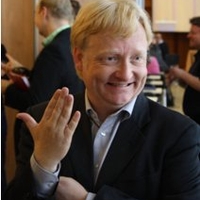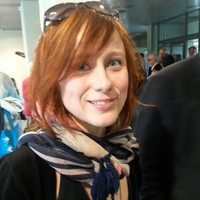Papers by Christian Rathmann
Signed languages strongly favor nonconcatenative morphology Sandler 2005, Fernald and. This type ... more Signed languages strongly favor nonconcatenative morphology Sandler 2005, Fernald and. This type of morphology includes processes that change at least one of the parameters of the stem, such as handshape, orientation, location or movement. It is argued that there are two types of nonconcatenative morphology in signed languages. In one type, exemplified by numeral incorporation, all the morphemes in a sign have a fixed realization. In the other type, exemplified by verb agreement, one of the morphemes in a sign does not have a fixed realization in the lexicon and requires interaction with gestural space. This type is modality-specific. Using the framework of Optimality Theory, the paper argues for the distinctiveness of these two types on the basis of phonological constraints that apply to them in data from a cross-linguistic survey of German (DGS) and American (ASL) Sign Languages.
Journal of Religion, Disability & Health, 2011
Leaders of spiritual communities should support a family welcoming a deaf or hard-of-hearing chil... more Leaders of spiritual communities should support a family welcoming a deaf or hard-of-hearing child in such a way that the entire community offers the child genuine inclusion. The ideal situation for protecting mental, emotional, and spiritual well-being is to raise the child bilingually. The community leader can guide as the community participates in nourishing the child by providing information and suggestions for action. The community needs to understand deafness as primarily a condition of gaining a culture and language rather than sensory loss, so that family and others evolve from grieving the loss of their expectations of what their child's life might be like to looking forward with hope to the unique contributions that child can bring to the world.
Deafness & Education International, 2007
Researchers, the Deaf community, teachers of deaf children and speech and language therapists all... more Researchers, the Deaf community, teachers of deaf children and speech and language therapists all share a concern about how to improve deaf children's written language skills. One part of literacy is story writing or narrative. A fi nding from a small number of studies is that children exposed to sign language from early childhood onwards achieve the highest level of bilingualism and become skilled readers and writers Morgan, 2005). Potential contributing factors may include fi rst language transfer, meta-linguistic awareness, cognitive readiness, motivation, parental interaction and emotional well-being. This paper reviews the fi rst three contributing factors and outlines the theoretical case for bilingual narrative activities in deaf children.

Infant Behavior & Development, 1998
In the acquisition of spoken language, there is a gradual transition between babbling and the pro... more In the acquisition of spoken language, there is a gradual transition between babbling and the production of first words; for example the consonantal repertoire of babbling carries over into children's early words (Locke 1983). The same has been claimed for the transition between manual babbling and deaf children's production of their earliest signs (Petitto & Marentette, 1991). Here we hypothesize that motoric constraints may dominate both babbling and early sign production. Prior work has demonstrated that certain well-established tendencies in infant motor development may account for many of children's errors in early sign production (Meier, Mirus, Mauk, & Conlin, in press). Here we examine the acquisition of a subset of the articulatory features of American Sign Language (ASL) and compare their production in babbling and first signs. To the extent that motoric factors constrain manual babbling and first signs, we would anticipate similar gestural patterns in the prelinguistic gesture of deaf children with sign exposure and in the prelinguistic gesture of hearing children with no sign exposure. Moreover we would anticipate that these gestural patterns would carry over into early sign production in the deaf, signing children.








Uploads
Papers by Christian Rathmann